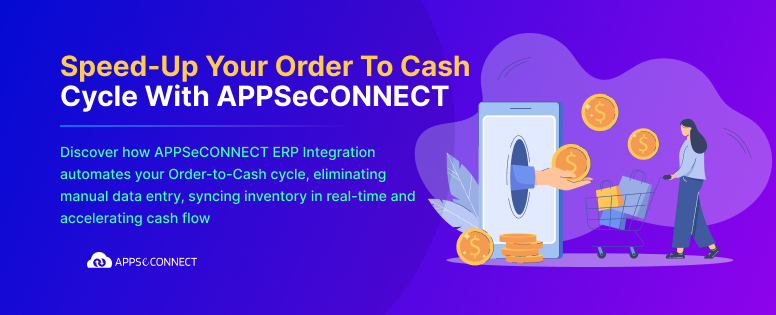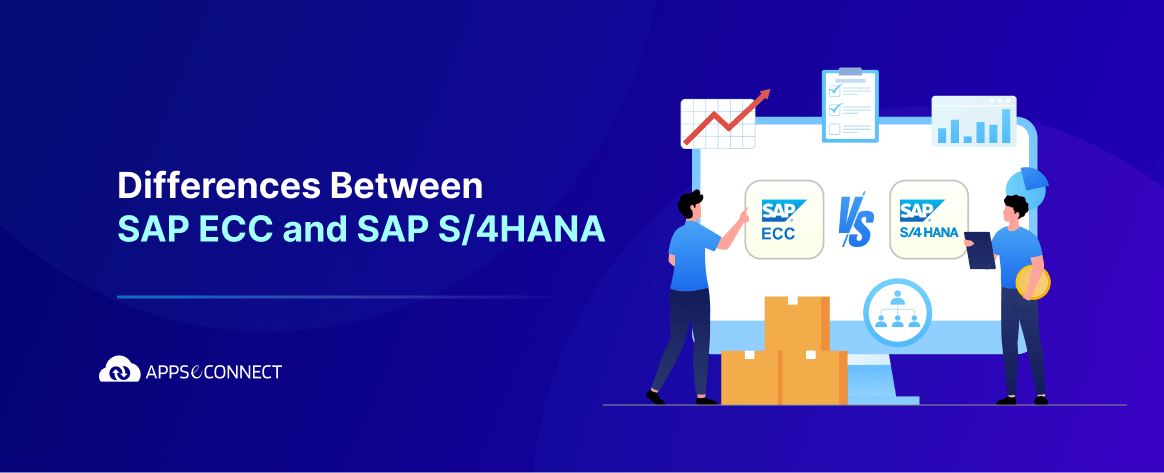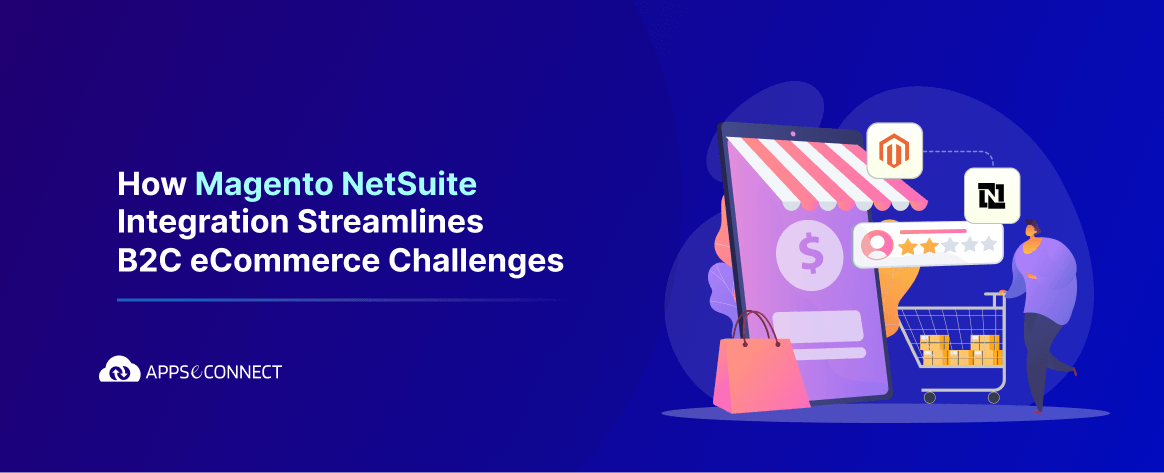SAP provides standard fields for order reason at the time of order processing. Let us try and understand the role of this field in general and with respect to ecommerce integration in particular. Order reason helps us capture the exact reason why the sales document is being entered by the customer. Some of the order reasons are listed below and the related business case is also mentioned along with the same.
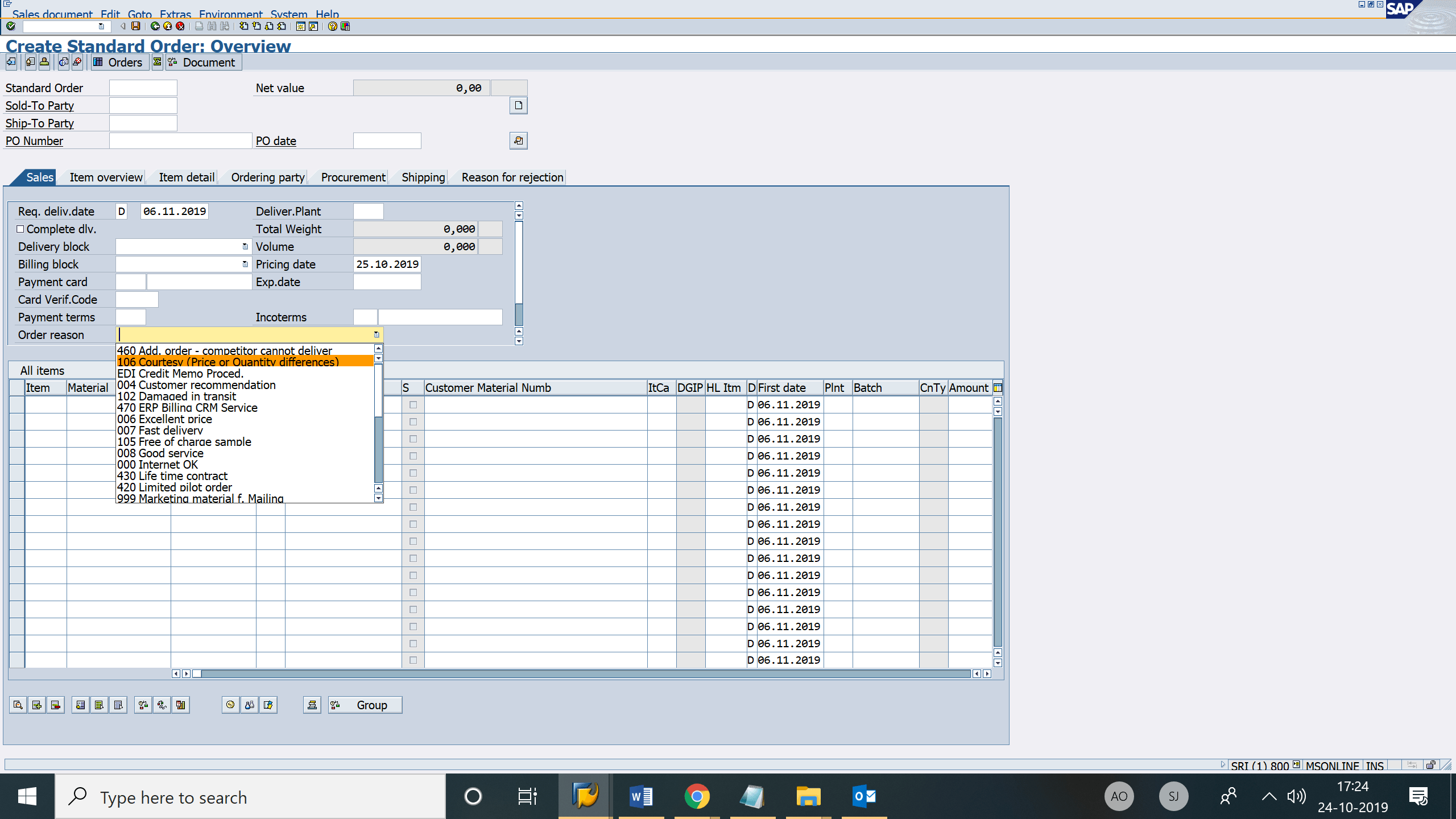
Are you ready to try our
Some usual order reasons and their business use
New order reasons can be configured by following some steps as outlined in the next section. Let us look at some popular order reason and their business usage.
- Web order – Some organizations may want to capture all the orders coming from various channels like ecommerce stores and market places using a custom order reason.
- Competitive Advantage – If the company is getting this order due to faster delivery, better prices or due to sales call they can be classified in this bucket.
- Promotions – This is the case when there is a promotion running and the end customer is placing the order due to this. You can also create different order reasons for let’s say television commercials or let us say thanksgiving sales.
- Free Samples – This is the case when there is a promotion running and the end customer is placing the order due to this. You can also create different order reasons for let’s say television commercials or let us say thanksgiving sales.
- Returns – Kindly note that order reason is not only valid for sales order but equally if not more important in the case of returns. A return order is followed by a credit memo. It is usual that for return orders, the order reason is mandatory. See the section below to understand how to make a field mandatory in a sales document.
- Damaged goods / Difference in ordered versus delivered quantities – Lets us say that the customer ordered 100 pcs of a specific SKU. However, due to availability reasons/damage during the transit, he received only 96 of them. Hence if he places a new order for the remaining 4, we could use this order reason to understand the scenario.
Are you ready to try our

Configuring a new order reason within SAP
Having understood the importance of order reasons, let us look at how to configure a new one. This is especially important since every customer is different and due to business circumstances, it may be required to create a new order reason. Listed below are the steps for configuring an order reason.
- Launch SPRO and navigate to Sales and Distribution -> Sales -> Sales Documents -> Sales Document Header -> Define Order Reason.
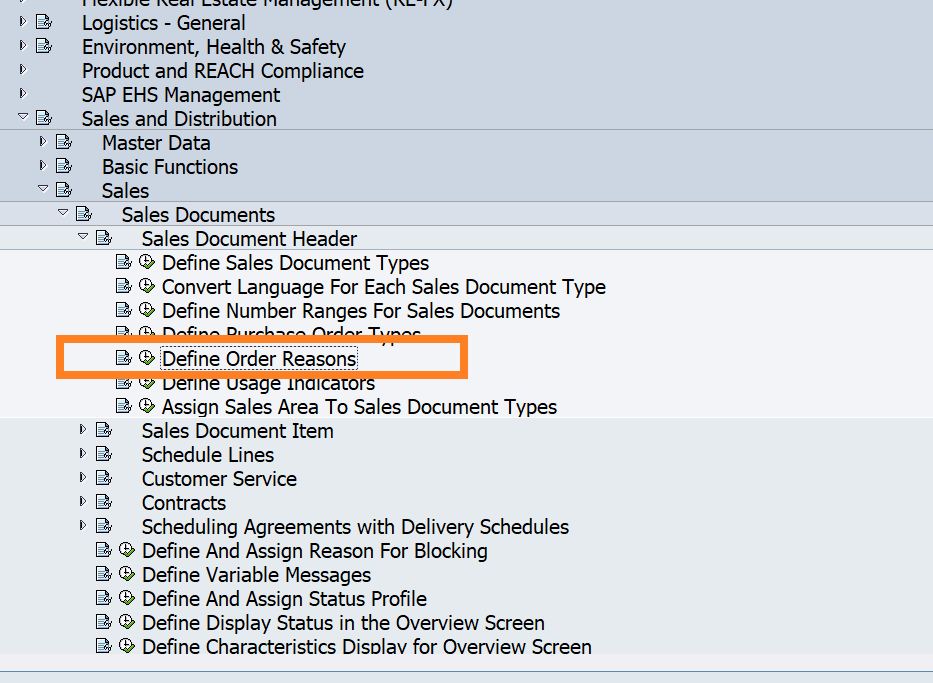
- You would see the existing order reason code along with the description as shown in the screenshot below.
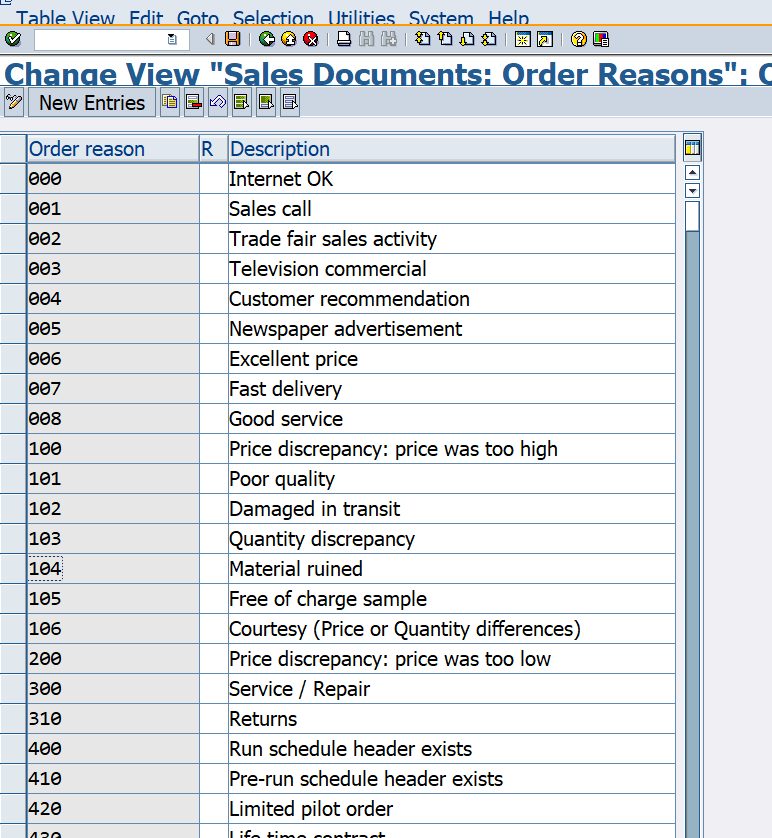
- Click on new entries and enter the new order reason. Remember that the order reason code has to be unique. In our case, we are going to create an order reason “ eCommerce Orders” and give the code 480.
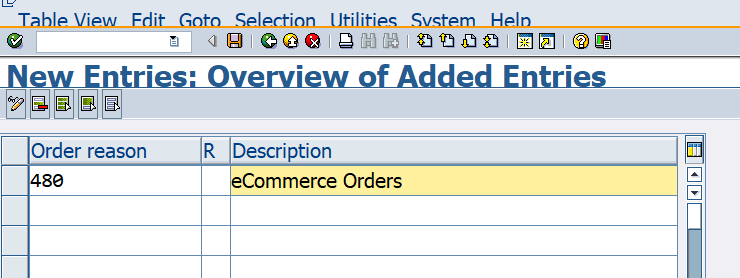
- When you click on save, it will prompt for a customizing transport request. If you already have one, you can use the same. If not, you can create a new one.
- You can go back to the order screen and see whether the new order reason is present. Hence on launching transaction VA01 you should be able to see the below.
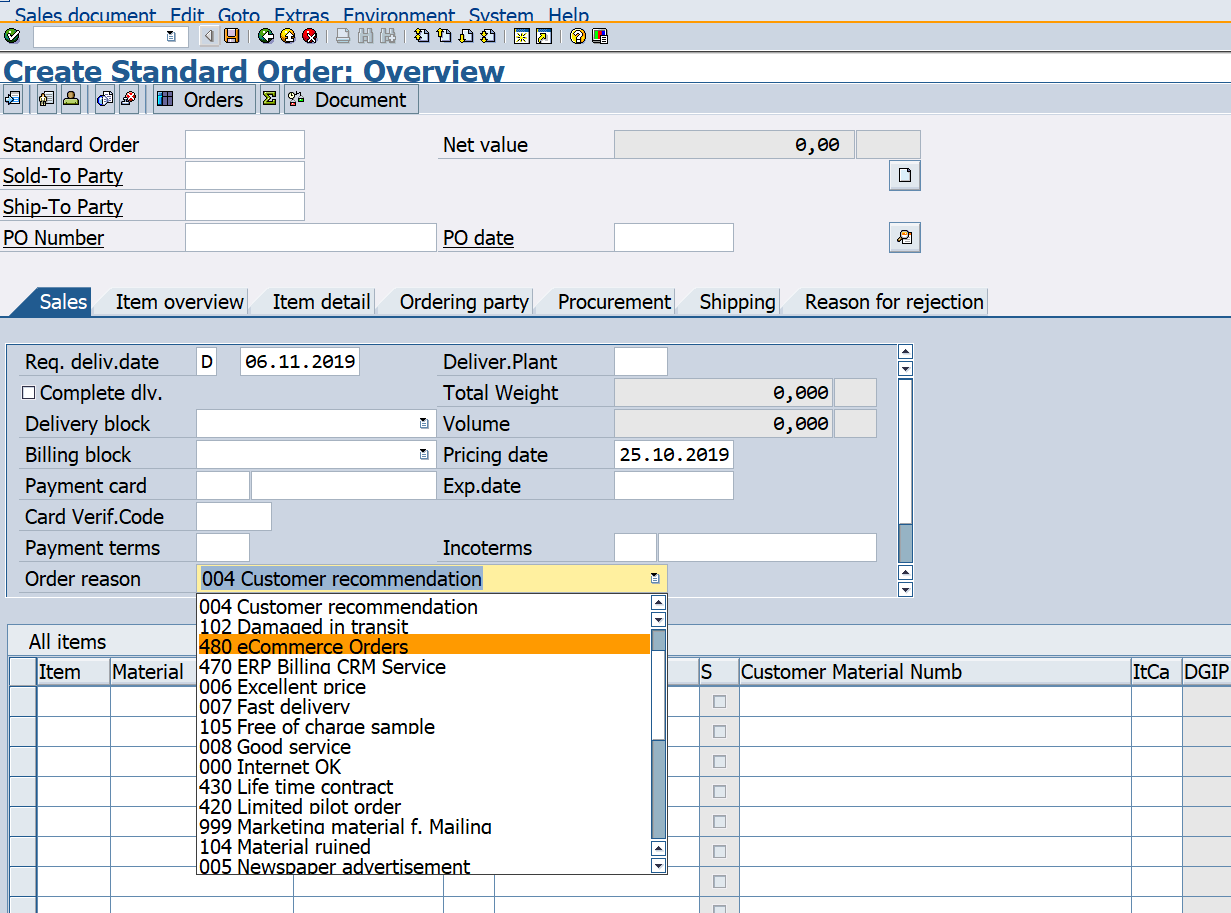
You must note that if you are using SAP in multiple languages, you need to maintain the description in each respective language. This can be done by logging into the individual language, navigating to the menu path for maintaining order reasons and entering the description.
 Making Order reasons mandatory for certain sales document types
Making Order reasons mandatory for certain sales document types
If you want to make the order reason mandatory for certain sales documents, you can follow the instructions in this section of this article.
- Navigate to the following menu path Sales and Distribution à Basic Functions à Log of incompleteness procedure.
- Got to the incompleteness group A related to the sales header.
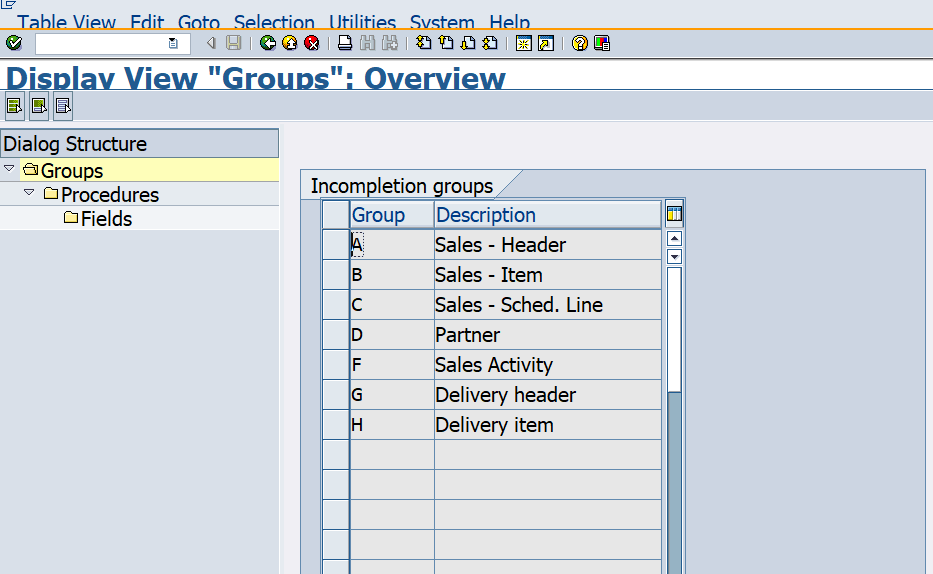
- Maintain the order reason field here. Just in case you need, the field for order reason is VBAK- AUGRU.
- Make sure that the sales document you are using follows the above incompleteness procedure.
We sincerely hope that this tutorial on how order reasons are useful, their configuration and inclusion to incompleteness procedure augmented your understanding on this subject. If you have any questions or feedback, kindly reach out to us.
Now, you can easily connect your SAP ECC with the Ecommerce store or CRM to automate the business process!
Are you ready to try our



